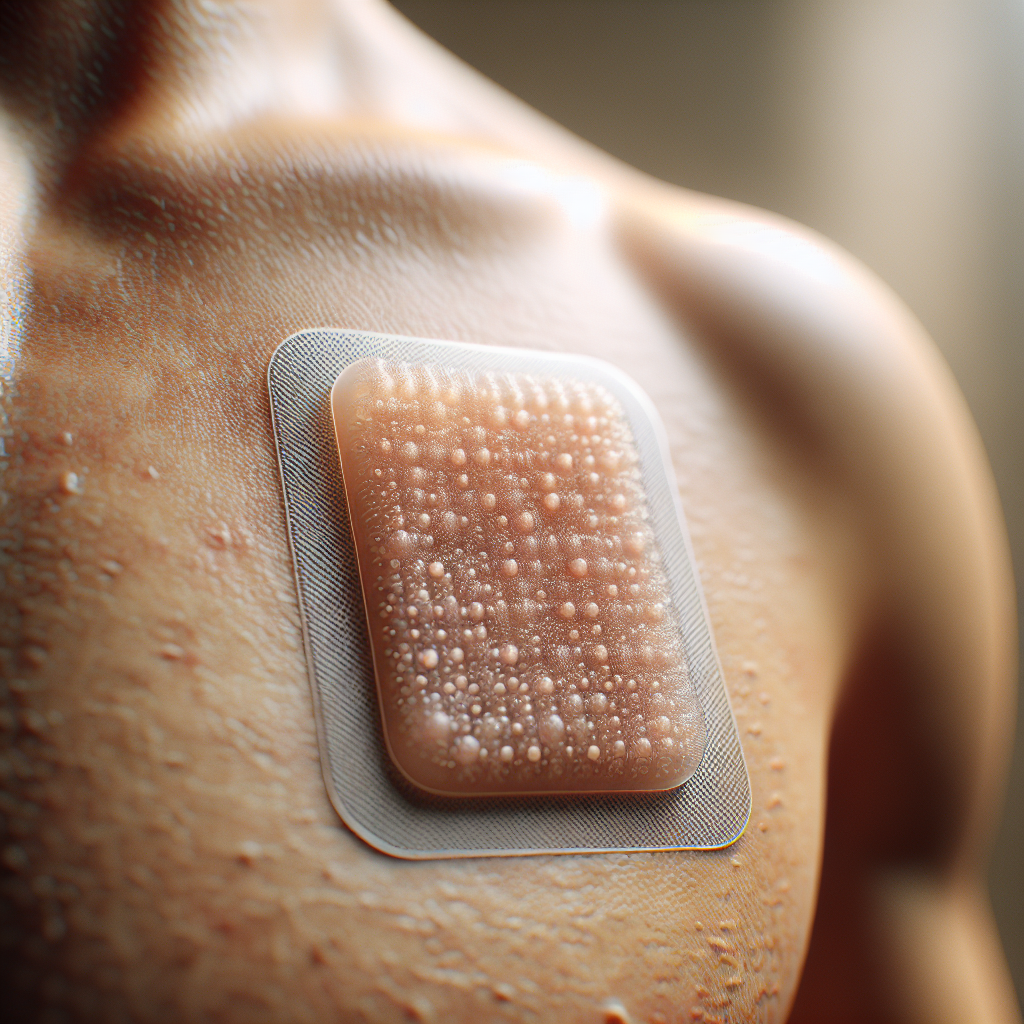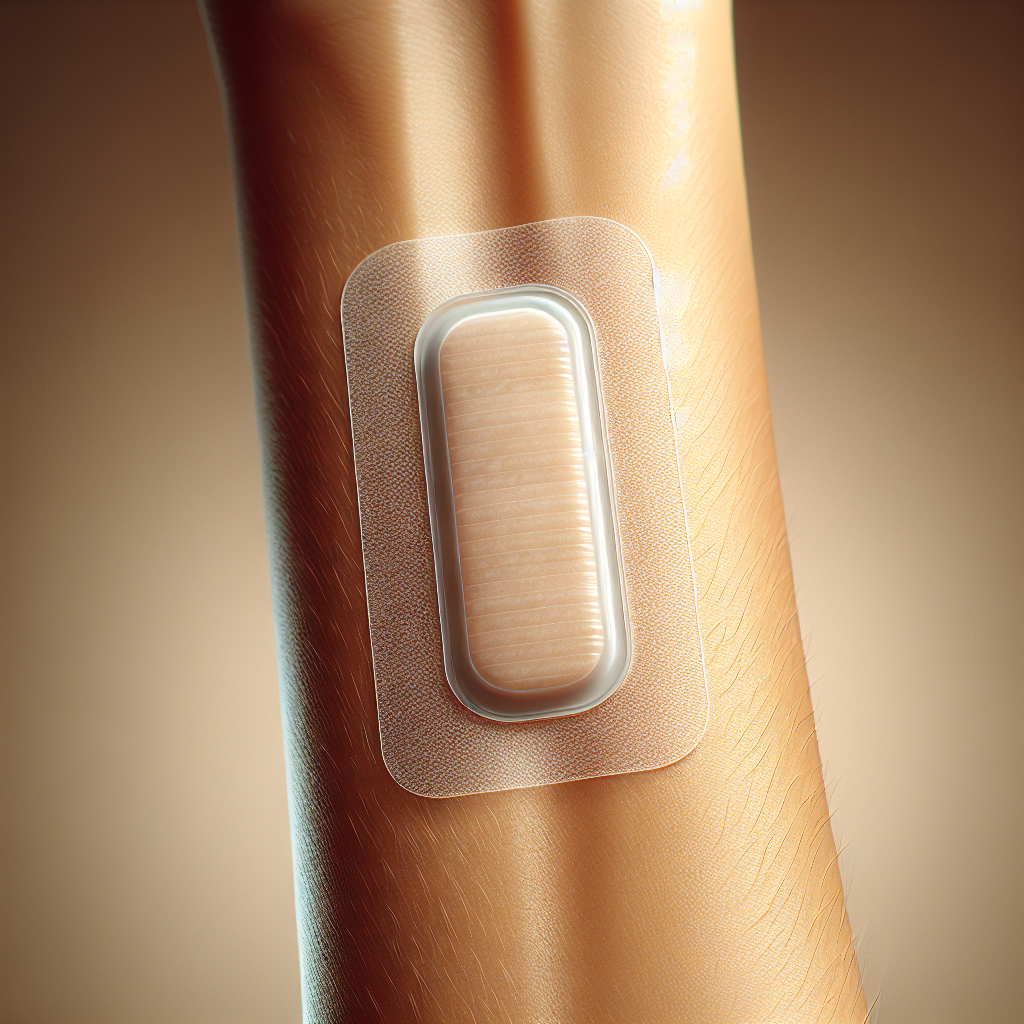Discover the Benefits of Using a Transdermal Patch!
Transdermal patches are innovative delivery systems that allow substances to be absorbed through the skin and into the bloodstream. This method of administration is particularly beneficial for individuals looking for a convenient way to receive medication or nutrients without the need for injections or oral intake. The advantages of using a transdermal patch include consistent absorption rates and prolonged effects, which can lead to better therapeutic outcomes.
One of the primary components of a transdermal patch is its adhesive layer, which ensures that the patch adheres securely to the skin. The active ingredients are typically contained within a reservoir or matrix layer, designed to release the substance gradually over time. This controlled release mechanism not only enhances the effectiveness of the treatment but also minimizes side effects that may occur with traditional methods of drug delivery.
In addition to medications, transdermal patches can also be used for nutritional supplementation. For instance, our Booze Bandage hangover patch utilizes natural Vitamin B1, also known as Thiamine, to replenish essential vitamins in your system after consuming alcohol. This innovative approach allows users to enjoy their time without worrying about the dreaded hangover the next day.
Cure the Hangover before it happens! Visit boozebandage.com to learn more about our transdermal patches and how they can enhance your well-being!
Key Benefits of Using Transdermal Patches
The use of transdermal patches offers a plethora of advantages that make them an attractive option for both medication delivery and nutrient supplementation. Here are some key benefits:
- Convenience: Transdermal patches are easy to apply and can be worn discreetly throughout the day. Users do not have to worry about taking pills or scheduling injections, making them ideal for busy lifestyles.
- Consistent Release: These patches provide a steady release of active ingredients, ensuring stable blood levels over time. This can enhance the effectiveness of the treatment and reduce the need for frequent dosing.
- Minimized Side Effects: By avoiding the digestive system, transdermal patches can decrease the potential for gastrointestinal side effects that often accompany oral medications.
- Targeted Delivery: Transdermal patches can be designed to target specific areas of the body, allowing for localized treatment with minimal systemic exposure.
- Enhanced Bioavailability: Certain substances can achieve higher bioavailability through the skin compared to oral routes, ensuring that more of the active ingredient enters the bloodstream effectively.
These benefits make transdermal patches a compelling option for individuals seeking effective and user-friendly solutions for health and wellness.
How Transdermal Patches Work in the Body

Understanding how transdermal patches work can shed light on their effectiveness and popularity as a delivery system for medications and nutrients. These patches utilize a unique mechanism to ensure that active ingredients are absorbed into the bloodstream.
When a transdermal patch is applied to the skin, it adheres to the epidermis and begins to release its active ingredients. The process involves several stages:
- Diffusion: The active ingredients within the patch dissolve and diffuse through the adhesive layer and into the skin. This diffusion process is driven by concentration gradients, where substances move from areas of higher concentration to lower concentration.
- Permeation: Once the ingredients reach the stratum corneum (the outermost layer of the skin), they penetrate deeper into the dermis. This step is crucial for ensuring that the substances reach the blood vessels located in the dermal layer.
- Systemic Absorption: After permeating the skin, the active ingredients enter the bloodstream, allowing for systemic circulation throughout the body. This results in faster onset of effects compared to some oral medications, which must first pass through the digestive system.
This efficient delivery system not only enhances the bioavailability of the active ingredients but also minimizes the need for frequent dosing, making transdermal patches a highly effective option for many users.
Comparison with Other Delivery Methods

When considering the most effective ways to deliver medications and nutrients, it's essential to compare transdermal patches with other prevalent delivery methods such as oral tablets, injections, and intravenous (IV) administration. Each method has its own advantages and disadvantages that can influence user experience and efficacy.
Oral Tablets: This is one of the most common delivery methods. While it is convenient and non-invasive, oral intake may involve longer onset times as the medication must pass through the digestive tract. Additionally, factors like food intake and digestive health can affect the absorption and bioavailability of the active ingredients.
Injections: Injections provide a direct route into the bloodstream, offering a rapid onset of action. However, they can be painful, require professional administration, and may lead to complications like infection or adverse reactions. Many individuals also experience anxiety regarding needles, making this method less favorable for regular use.
Intravenous (IV) Administration: IV delivery is the fastest method for achieving therapeutic levels of medication in the bloodstream, often used in hospital settings. However, it involves significant logistical considerations, including the need for sterile environments and healthcare professionals for administration, making it impractical for daily use outside clinical settings.
In contrast, transdermal patches offer a non-invasive, user-friendly alternative that allows for sustained release of medication over time, leading to consistent blood levels and improved compliance. They also eliminate the first-pass metabolism that can reduce the effectiveness of oral medications, making them a more efficient choice for many individuals.
Safety and Side Effects of Transdermal Patches

Safety is a paramount concern when it comes to any method of drug delivery, and transdermal patches are no exception. Understanding the potential side effects and safety profiles of these patches is crucial for users seeking effective and reliable solutions for nutrient and medication delivery.
Generally, transdermal patches are considered safe for most individuals, as they utilize a controlled release mechanism that minimizes peaks and troughs in drug concentrations. This mechanism helps in reducing the likelihood of overdose compared to other delivery methods. However, some users may experience mild side effects, which can include:
- Skin Irritation: The adhesive used on transdermal patches may cause redness, itching, or a rash at the application site. It's advised to rotate application sites to prevent prolonged exposure to any one area.
- Allergic Reactions: Although rare, some individuals may be allergic to the materials used in the patch, leading to more severe reactions. If you notice hives, swelling, or difficulty breathing, seek medical attention immediately.
- Systemic Effects: Occasionally, individuals may experience systemic side effects depending on the medication delivered through the patch. This could include nausea, dizziness, or headaches.
To mitigate these risks, it's essential to follow the manufacturer's instructions carefully and consult a healthcare professional before starting any new medication or nutrient regimen. Pregnant or nursing women, as well as those with underlying health conditions, should exercise caution and discuss their options with a healthcare provider.
In summary, while transdermal patches offer a convenient and effective delivery method, awareness of potential side effects and adherence to safety guidelines can enhance the overall user experience.
Future Trends in Transdermal Patch Technology

The landscape of transdermal patch technology is evolving rapidly, paving the way for innovative solutions that promise enhanced efficacy and convenience. As research progresses, several exciting trends are emerging that could revolutionize how we deliver medication and nutrients through the skin.
One of the most notable trends is the advancement in microneedle technology. Microneedles are tiny needles that create microchannels in the skin, allowing for more efficient drug delivery while minimizing discomfort. This technology opens the door for delivering larger molecules, such as proteins and vaccines, that traditionally faced challenges with transdermal absorption.
Furthermore, the integration of smart technology into transdermal patches is gaining traction. These "smart" patches can monitor physiological parameters and adjust the release of medication in real-time, providing a personalized approach to treatment. For instance, they could potentially release pain relief medication only when the user exhibits signs of discomfort, leading to more effective management of chronic conditions.
Another exciting development is the use of biodegradable materials in patch design. These eco-friendly patches reduce waste and environmental impact, aligning with the global push for sustainability in healthcare. Additionally, researchers are exploring enhanced skin permeation techniques, such as chemical enhancers and iontophoresis, which use electrical currents to improve drug absorption.
As these advancements unfold, consumers can look forward to more effective and user-friendly transdermal patches that cater to their health needs. With the right solutions, you can take your wellness journey to the next level. Cure the Hangover before it happens! Visit boozebandage.com to discover how our innovative hangover prevention patches can help you feel great the next day after enjoying your favorite beverages.
